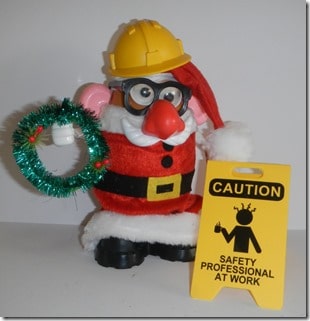
See also: Everything is Green: The delusion of health and safety reporting
Test safety management before you go away
By Greg Smith MY SAFETY THOUGHTS
As we approach the holidays, social media is abuzz with warnings about accident rates increasing in the lead up to the holidays. For managers who would like a peaceful holiday period, here is simple framework to test whether safety management works. This is also a great test for measuring personal due diligence.
Step 1: What concerns you?
What is the thing (or things) about health and safety keeping you awake at night? Is it electricity? Lifting operations? Working at height or dropped objects? Training and competence? Contractor safety management? Management of change? The ability of your workforce to identify and manage risk in their day-to-day tasks?
It doesn’t matter, pick one or two.
Step 2: Review the health and safety information you have received in the last three months.
Have a look at safety information, safety bulletins for example. Monthly reports. Minutes from safety meetings. Whatever health and safety information you have looked at in the last three months.
What does the information tell you about how well your organisation manages the “thing“?
Does the information “prove” the “thing” you are concerned about is managed in accordance with the requirements of your safety management system?
The following information does not count:
- Injury rate data;
- “lead” safety indicators or “positive” performance indicators that only measure “activity“. For example, number of site inspections done, number of hazard reports submitted, number of corrective actions closed out, and so on.
History is clear. None of this information “proves the effectiveness” of safety management.
The information must show the thing you are concerned about is being managed in accordance with the requirements of the safety management system, and it is working.
Do not worry if your health and safety information doesn’t show you health and safety management is working. Why should yours? No one else’s does.
You can always move on to step 3.
Step 3: Ask your safety manager.
Your safety manager is the person who handles your safety management system, right? They should be the person in your organisation who can tell you if safety management is working? They should be able to tell you if the thing you are concerned about is being managed in accordance with the requirements of the safety management system?
Your Chief Financial Officer can give you good insight into the financial position of your business?
Your Project Managers can tell you whether work is proceeding on time and budget?
What can you health and safety manager tell you?
What are you looking for?
There is a clear message when we look at major accident inquiries and safety prosecutions. Courts and tribunals are not interested in personal injury rates and lead indicators.
If you have a workplace accident you need to prove:
- There was a “proper” system to manage the hazard(s) that gave rise to the accident; and
- There was “adequate” supervision to ensure you implemented the “proper system” and it was effective to manage the hazard(s).
4. DUE DILIGENCE from Human Dymensions on Vimeo.


Do you have any thoughts? Please share them below